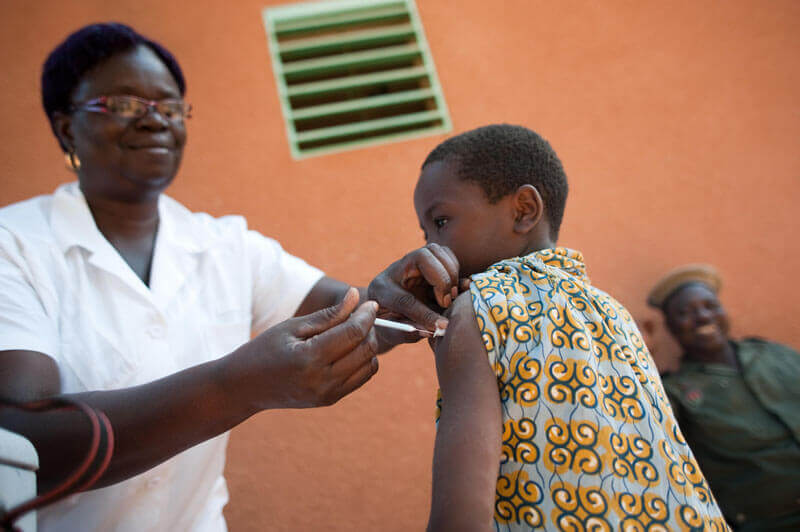Kat KelleyGHTC
Kat Kelly is a senior program assistant at GHTC who supports GHTC's communications and member engagement activities.
A new paper-based diagnostic can test for Ebola, dengue, and yellow fever in just ten minutes without running water, electricity, lab equipment, or highly-trained personnel. “We purposely designed it to be very simple not only to assemble but also to use and to read out,” says lead developer Dr. Kimberly Hamad-Schifferli, a Massachusetts Institutes of Technology professor. Initial symptoms for these three hemorrhagic fevers are nonspecific, making them hard to diagnose, and existing diagnostic methods—while more accurate—are impractical for low-resource settings. This paper-based diagnostic currently costs US$20, although Hamad-Schifferli believes it could be manufactured for even less. The test uses red, orange, and green nanoparticles to test for Ebola, yellow fever, and dengue respectively, and just by identifying the colors that appear on the strip, a diagnosis can be made.

An experimental vaccine against Middle East Respiratory Syndrome (MERS) will be tested on humans later this year in clinical trials run by Inovio Pharmaceuticals and GeneOne Life Science. The vaccine, which was developed by researchers at the University of Pennsylvania in partnership with Inovio, the US and Canadian governments, and the Universities of Washington and South Florida, will be the first against MERS to advance to human clinical trials. The team took a novel approach to developing the vaccine, using an artificially engineered DNA sequence, rather than material from the MERS virus itself. The DNA prompts the recipient’s immune system to produce a protein that is unique to the MERS virus, which in turn triggers the production of protective proteins—known as antibodies—that detect that unique MERS protein and attack it. The vaccine successfully induced the production of these protective proteins in mice, monkeys, and camels, and as it does not contain any live viral material; it’s anticipated to be safer than traditional vaccines.
Gilead Sciences Inc., a California-based biotechnology company, is aiming to cure HIV and AIDS and hepatitis B and one candidate—GS-9620—has shown promise in combatting both infections in animal studies. “Gilead is the leader in HIV,” according to Andrew Cheng, executive vice president of Clinical Research and Development Operations at Gilead Sciences, and he’s got a point: 80 percent of new HIV and AIDS patients start treatment using a Gilead product. Their expertise in antivirals expands beyond HIV and AIDS; the company has doubled its sales over the past two years, due to the market introduction of Sovaldi and Harvoni—drugs that cure Hepatitis C in 90 percent of patients. Existing treatments for HIV and AIDS prevent active, HIV-infected cells from reproducing, however, inactive cells are able to escape detection, effectively hiding from the immune system. GS-9620 is one of several drug candidates that uses a method known as “shock and kill” to wake the latent, infected cells, enabling the immune system to identify and attack them. The treatment successfully triggered viral activity in monkeys and is now being tested in humans. The treatment has also been tested in woodchucks infected with Hepatitis B, and within a month, the virus was completely undetectable.
Researchers at the University of Pennsylvania and the University of Ulm in Germany have discovered a molecule that attacks both HIV-infected cells and a protein in semen that enhances the infectivity of the HIV virus. The molecule—CLR01—latches onto viral membranes, known as viral envelopes, but passes over cell membranes. This suggests that the molecule is unlikely to have any major side effects and that it might be successful in combatting other sexually transmitted viruses. The tweezer-shaped molecule also targets and suppresses molecules in the semen that attach to the HIV virus and help it bind to human immune cells, ultimately making the virus 10,000 times more virulent. CLR01 has been successfully tested in zebrafish and mice and will next be tested for safety in efficacy in nonhuman primates. According to the researchers, mass producing CLR01 is relatively simple, making it a microbicide candidate.